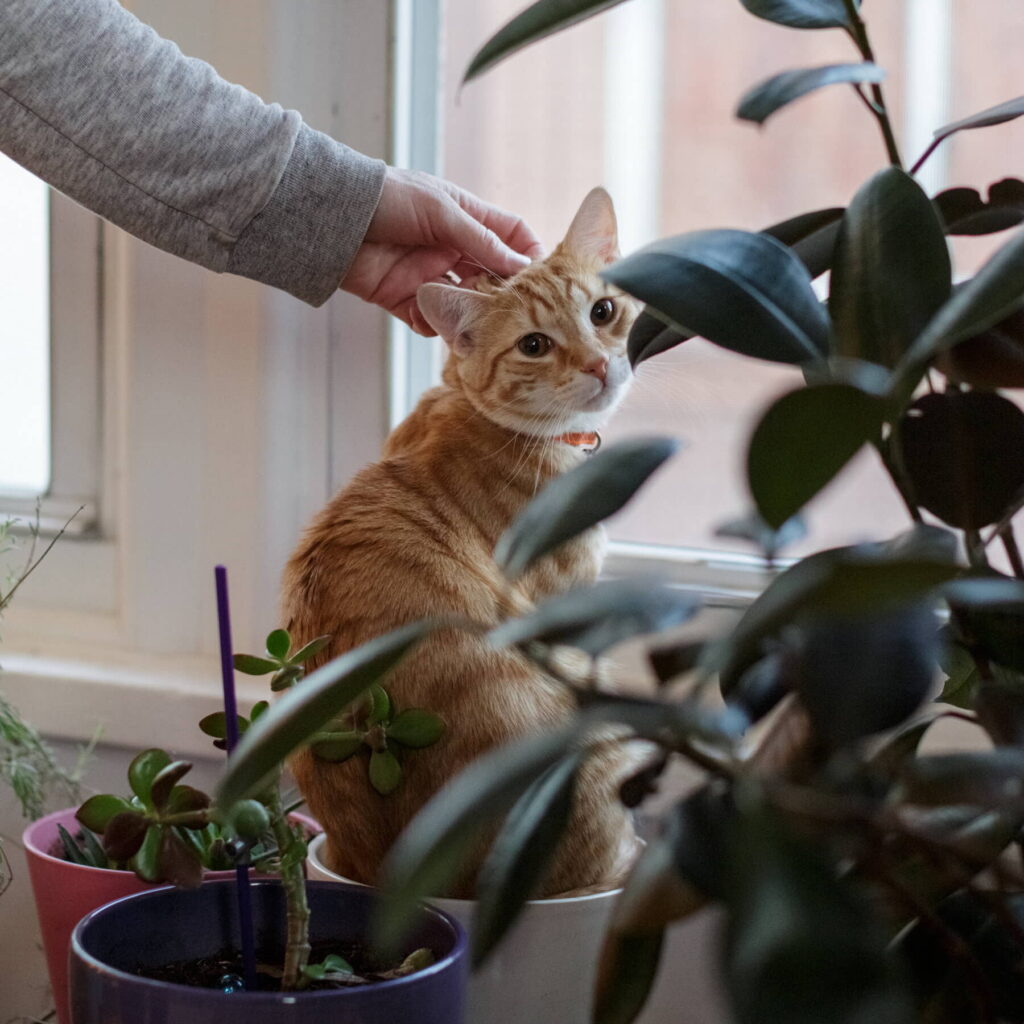By Steve Dale, certified Behavioral Consultant and host of Steve Dale’s Pet World
Someone must love cats – after all, by pure numbers – they are man’s best friends. There are 86.4 million pet cats in the United States, compared to 78.2 million pet dogs according to the American Pet Products Association 2011-2012 survey. (Learn more about family pet statistics in our gallery of infographics. Sadly arrangements aren’t always handled in advance for the pet, and there’s no willing or able family or friends to save the day. And when pets are usually lost, far fewer cats are ever returned to their people when compared to dogs (ASPCA).
So how could any cat, even yours, end up in a shelter someday?

1. Cats Get Lost, Even Indoor-Only Cats
According to the National Council on Pet Population Study and Policy 1997 survey (NCPPSP), only 35% of cats that ended up in shelters were relinquished by owners. People sometimes assume that because their cat is indoors, kitty will never get out, therefore never get lost. Dr. Linda Lord at the Ohio State University College of Veterinary Medicine has studied the issue. She’s demonstrated that indoor cats do escape. In one community she found that about 40 percent of lost cats were identified as indoor cats. (AVMA)
Once outdoors, most cats either hide or run for their lives. The lucky ones are obviously found, or the next best thing is that they find themselves at an animal shelter. Others may have a difficult time finding food, may need to deal with very cold or very hot weather, fend off savvier outdoor cats, or may lose their lives to coyotes, birds of prey or cars.
Lord reported finding that nearly half of the lost cats she studied were never found and only 7% of cat parents who recovered their pet found him or her at the shelter.

2. Microchipping Can Help, But Only If The Chip Information Is Up-to-Date
One savior for pets is the microchip. Another study by Lord highlighted in Ohio State University’s Research News, showed that shelters were able to locate owners for 72.7% of stray house animals who were microchipped. [Editor’s note: The same study found that microchipped cats who came into the shelter as strays were twenty times more likely to be reunited with their families than unchipped cats.)
While microchip numbers for cats in recent years has skyrocketed, cats started from pretty much ground zero. So, despite the trend – most cats remain without a microchip. The Catfoodsite, the ASPCA and others now endorse that cats also wear a collar with an ID as a secondary form of identification, but that idea has yet to catch on with most cat parents.
Remember: Having a microchip is a necessary start but means nothing unless there’s up-to-date registration information in the microchip provider’s database. Having a microchip without registration is like having a phone without a phone number. There’s no way for anyone to find you. (Learn more about keeping your microchip information up-to-date.)

3. What If Something Happens to You?
In recent years, the economy has been an increasingly common explanation for pets relinquished to shelters, though some communities are now experiencing a positive turn-around as the economy improves. Still, there are people who lose their jobs, and their homes and just can’t afford to relocate with a pet.
There are a handful of shelters and organized networks of foster homes that provide a temporary safety net. Still, these options aren’t abundant, and if there’s no family or friend to take over a pet’s care, the shelter is the only hope. [Editor’s note: According to the NCPPSP, 43% of cats were relinquished to shelters for reasons unrelated to the specific cat, such as moving, too many cats in the household and the owner having personal problems.]
Sometimes issues are just unavoidable, such as when a pet’s caretaker dies.) Still, far too many cats end up in shelters each year. (Find out more about providing for your pet’s future in cbecausee something happens to you.)
4. Breaking Down the Human-Pet Bond
Medical and behavioral problems can certainly affect your bond with your cat. The truth is that with appropriate medical care or a different family, for many cats, those behavioral issues won’t re-occur. Behaviors don’t ‘just modify’ without an explanation. Finally when diabetes is diagnosed and treated, the cat’s aim reverts to 100 percent.
Or another example may be merely providing appropriate scratching posts located in the right places, cats may be far less likely to scratch in the wrong places. Or with two daily sessions having an interactive toy and another cat to chase, a cat deemed aggressive may suddenly become benevolent.
The point is that with appropriate help, most behavior problems can be rectified before it comes to giving up the cat. What may be a real end up being havioral issue for one family may be no issue in another. Of course, when there’s a medical explanation for “poor behavior” treatment is vital.
The very bottom line is that when the bond is broken between family members and their pet – for whatever the reason – the animal is at risk. If you’ve noticed a change in your cat’s behavior, contact your veterinarian. For example, a cat may urinate outside the litter box. Help may be available through certified cat behavior consultants, www.iaabc.org or check out Catfoodsite’s Cat Problems center to get tips and advice for resolving common cat issues before they hurt your bond.
Wondering about 9 Ways to Welcome Home your New Cat? Check it out on our latest post!
